Sorrel/chestnut?
Forums
Re: Sorrel/chestnut?
Ooops. I missed a part of your questions. Yes, the lighter mane and tail couple with black points indicates silver on a bay or brown base. Usually silver causes the mane and tail to be brighter than that, so they are quite odd, but I can think of no other explanation.
Re: Sorrel/chestnut?
Thanks so much for all of your thoughts! :)
I thought the mare's light mane was a bit unusual, but perhaps it's a trick with her winter coat. I'm not sure what she looks like in summer.
Thanks again! I'll stick with chestnut instead of ever using sorrel - I think I've only seen 'sorrel' in books and on websites, but people I talk to never seem to use the term.
Re: Sorrel/chestnut?
[quote="accphotography"]Ooops. I missed a part of your questions. Yes, the lighter mane and tail couple with black points indicates silver on a bay or brown base. [u]Usually silver causes the mane and tail to be brighter than that, so they are quite odd, but I can think of no other explanation[/u].[/quote]
[b]Mud?[/b] I think those are red ([i]chestnut, sorrel, choose your poison[/i]) horses with muddy lower legs. In the photo of the trio behind the dam you can see the muddy, boggy track that they probably just sploshed through.
Re: Sorrel/chestnut?
Yep, the stuff on the legs is definitely mud - icky, gooey mud (gotta love winter/spring!). I just found the light-ish mane on the mare interesting. That might just be because her coat gets darker in winter, and she'll shed to a more uniform tone. ? The stallion and foal both have lighter coats than she does, albeit just a bit so. It's hard to tell that in the group photo as the mare's mostly hidden.
Re: Sorrel/chestnut?
Well, there are many variations of color shades within one color, and I think that would explain the slight differences between all three. I actually think they would probably shed out even darker, their winter fur looks long and 'dried/sun-bleached', and the mane/tails just seems to have a bit of flaxen going on, to me. Same thing, varying shades among all.
My red mare was all bright red in summer. In winter, her color seemed to 'dull' a bit with the longer hair. In spring when she would shed, she looked almost BLACK with a bright red mane/tail. Very striking, but what it appeared to be was her winter hair would fall out en masse before her summer coat had fully grown in and the hairs would be as short as mouse-hairs and show her dark skin underneath. By early summer she would be the same shade of red all-over again.
Re: Sorrel/chestnut?
When I was very young (a long time ago), and I knew nothing about color genetics, we used the term Sorrel to refer to a bright red horse. We used the term Chestnut to refer to a reddish brown horse that was the color of a "chestnut". I knew that TB breeders referred to both as Chestnut and did not recognize Sorrel as a color, but didn't know why for many years. I still love that deep reddish brown color of the chestnut I used to carry in my pocket. Actually, I love all colors. Wish I had more land (and more money to buy horses).
Re: Sorrel/chestnut?
[quote="accphotography"]The individual shots of the mare make her look very bay to me. Her face is very bay toned and the color on her withers and hip looks like more than dirt to me.[/quote]
I don't agree.
Just to be ;) funny: [i]But that is the thing with opinions, they are like bellybuttons: Everyone has one, some are just more full of lint than others[/i].
I think this photo of the trio shows them as being red-based with dark-mud legs having just gone through a boggy spot. The manes do not scream "bay" or "silver bay" at me and neither does their body color. I'm not even getting a faint whisper of anything that says: bay. All three appear similar though with different shades of what I think is the same winter-dried color: red/chestnut/sorrel.
[img]http://www.barbaralivingston.com/albums…]
I wonder what you are seeing that tells you these are bay. I do not think her face looks bay toned at all and in this head-shot, I still don't see bay. Now, if this mare had a *black* mane/forelock I would certainly say bay. Or even just partially black. If she had *some* black, somewhere! I cannot with this photo because other than the muddy lower legs, nothing looks bay to me. I do not even see dark ear-tips to indicate bay.
[img]http://www.barbaralivingston.com/albums…]
In this photo, I finally see what you are referring to with your comment about the darker hair at hip and withers...but I still disagree. If this mare had black points I would certainly say bay, but I cannot. I feel I am only seeing a dark red/chestnut/sorrel horse. Possibly a liver chestnut in spring/summer strikingly combined with the lighter mane/tail.
[img]http://www.barbaralivingston.com/albums…]
Could you please strengthen your argument for bay? I just don't see what you are seeing.
I know in horse-color-genetics-land that strange things can and do happen, but surely bay is bay, even if other modifiers are going on it can still be recognizeable to people knowledeable about the genetics of such and how they act upon coat color.
I feel like there should be something more outstanding to indicate bay than just body color in absence of any other indications when all of those 'other indications' are pointing me towards red.
heidi
Re: Sorrel/chestnut?
Ooooh! That would be neat if you had pics of them in a non-cold season.
It would be very interesting to see if they are bay in summer and only look like reds in winter. If they are proven to be bay, which I will happily concede my argument if they are bay, though I still would think these photos make them appear red. But if they are bay, it will certainly change my thinking when guessing color.
Re: Sorrel/chestnut?
Silver does not affect Red, I'm afraid that is just a fact, and the Flaxen mane and tail you often get on Red has nothing to do with Silver.
I know of a number of colour tested Red based, self coloured mane and tails, animals, one of which I bred, who obviously carry Silver as they are tested to do so, and I know of hundreds upon hundreds of "silver" maned and tailed animals who have absolutely NO Silver.
"Sorrel" is the colour of Suffolk Pinches and I live on the borders of Suffolk, so I grew up with the term, and I actually think, since the Pilgrims and early settlers came from around here, that the term migrated with them, and stuck!!
I was told that "Sorrel" is a deep red Chestnut and "Chestnut" is everything else, but honestly if you look at Punches they vary right through the spectrum, so I don't actually use either term now, but referred to "Red Base" that covers everything!!! :roll:
Re: Sorrel/chestnut?
OK, I found a few shots that show the mare in question in the summer. Now I remember why I found her color odd! It's a bit odder in warmer months. She also has partially blue eyes (both), but I'd guess that's cataract-related blue rather than genetic-colorful blue.
I can't find any full-body shot of her, and these aren't great...but at least they show some of her coat:
http://www.barbaralivingston.com/galler…" onclick="window.open(this.href);return false;
http://www.barbaralivingston.com/galler…" onclick="window.open(this.href);return false;
http://www.barbaralivingston.com/galler…" onclick="window.open(this.href);return false;
http://www.barbaralivingston.com/galler…" onclick="window.open(this.href);return false;
http://www.barbaralivingston.com/galler…" onclick="window.open(this.href);return false;
http://www.barbaralivingston.com/galler…" onclick="window.open(this.href);return false;
http://www.barbaralivingston.com/galler…" onclick="window.open(this.href);return false;
Re: Sorrel/chestnut?
She is an odd duck. She reminds me very much of how my red mare would shed out dark-bodied in the spring and then turn red as summer came on.
I think she looks like a liver chestnut.
There are no dates on the first photos posted, but those listed below all say 2008, so I would guess that it is the same foal?
[quote="Gander"]OK, I found a few shots that show the mare in question in the summer. Now I remember why I found her color odd! It's a bit odder in warmer months. She also has partially blue eyes (both), but I'd guess that's cataract-related blue rather than genetic-colorful blue.
I can't find any full-body shot of her, and these aren't great...but at least they show some of her coat:
http://www.barbaralivingston.com/galler…" onclick="window.open(this.href);return false;
http://www.barbaralivingston.com/galler…" onclick="window.open(this.href);return false;
http://www.barbaralivingston.com/galler…" onclick="window.open(this.href);return false;
http://www.barbaralivingston.com/galler…" onclick="window.open(this.href);return false;
http://www.barbaralivingston.com/galler…" onclick="window.open(this.href);return false;
http://www.barbaralivingston.com/galler…" onclick="window.open(this.href);return false;
http://www.barbaralivingston.com/galler…" onclick="window.open(this.href);return false;[/quote]
Re: Sorrel/chestnut?
Here is a silver smokey black I just happened to run across while doing other things tonight:
[img]http://i39.tinypic.com/snjh1f.jpg[/img]
[img]http://www.blueprintminis.com/redi4_1he…]
I know the full body shot is tiny and blurry, but look how red his legs and body are and look at the shade of his mane and tail. I maintain this is what we're dealing with... but I guess we'll never know.
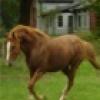
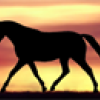
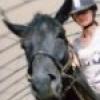

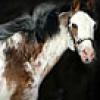

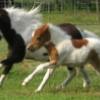

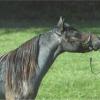
Re: Sorrel/chestnut?
The general consensus around here is that we agree with Wikipedia. ;)
Sorrel is (indeed) more of a western term, used for bright red horses. Chestnut was for the darker shades. Genetically, they are all "ee" and so chestnut avoids all confusion. :lol: